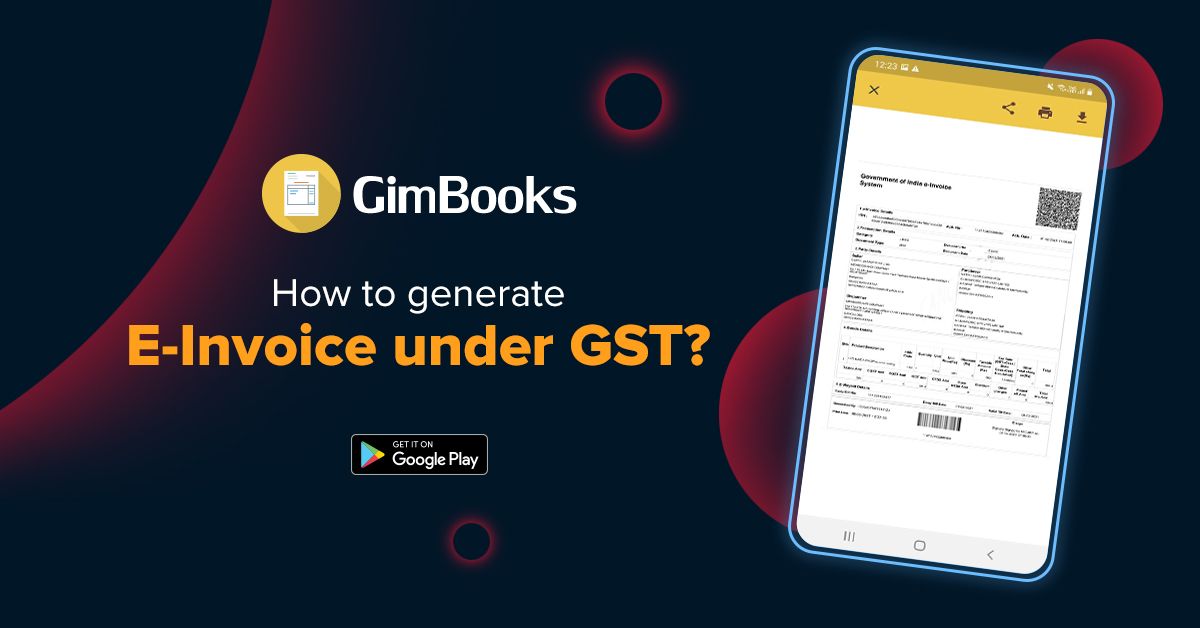Electronic invoicing or e-invoicing is an electronic framework through which Business to Business (B2B) solicitations are validated by the Goods and Service Tax Network (GSTN) for utilizing it on the GST entryway.
Why should GST E-invoices be created?
According to the proposed e-invoicing framework, each invoice produced will have a distinguishing proof number that will be given by the IRP (Invoice Registration Portal).
All the data identified with the solicitations will be moved continuously from this IRP to both GST and e-way charge entryway.
This will help in robotizing the way toward recording GST Returns, GST Annexures, and PART-An of the e-way charges guaranteeing no or less human mediation.
Documents required by the GST system to create E-invoices under GST?
There are some mandatory documents required to create E-invoices in GST E-invoicing generation systems.
1. Invoice
2. Credit Note
3. Debit Note
4. Any other document as required by law
5. JSON file as per the e-invoice schema(E- invoices made in bulk)
GST E-invoicing solutions. How to create your first e-invoice?
Here is a detailed guide on how to generate an e-invoice:
1. The taxpayer needs to adopt the reconfigured ERP system as per the new e-invoicing standards (schema) and shall contain all the mandatory parameters. The software of the supplier shall be able to generate a JSON file to upload on the IRP system. As the IRP can only take the JSON file format.
2. The taxpayer can then issue the invoice after filling in all the mandatory details such as billing name, address, GSTN of the supplier, item rate, transaction value, applicable GST rate, taxable amount, and so forth.
3. Upload the generated invoice JSON on the IRP as it will act as a central registrar for its authentication. You can interact with IRP using different modes like web, SMS, mobile application, offline tool, APIs, and GSP.
4. IRP will then verify the key details and duplication of the B2B invoices. Once the invoice passes all the validation IRP will generate IRN (Invoice Reference Number) or Hash. The format of Hash/IRN Contains 3 things:
- Seller GSTIN
- Invoice number
- Financial year YYYY-MM
5. Once the IRP generates the IRN it creates a QR code in the output JSON for the supplier. The QR code will consist of the following e-invoice parameters:
- GSTIN of supplier
- GSTIN of Recipient
- Invoice number as given by Supplier
- Date of generation of invoice
- Invoice value (taxable value and gross tax)
- Several line items.
- HSN Code of the main item (the line item having the highest taxable value)
- Unique Invoice Reference Number (hash)
- On the contrary, the supplier also gets intimated about the same in his/her registered email id (if mentioned in the invoice).
6. After all this process, the IRP will then send all the authenticated data to the GST portal for furnishing the GST returns and annexures. In addition to this, this data is also forwarded to the e-way bill portal.

Create GST e-invoice on mobile using GimBooks.
Easy invoice manager by GimBooks is the best mobile app for GST E-invoicing. Traverse below to know how to create E-invoice in GimBooks?
Open easy invoice manager by GimBooks and click “create new” to start creating your first E-invoice.

- Choose between creating a “tax invoice” or “bill of supply”. Choose “tax Invoice” if you have GSTIN.
- “Invoice date” is auto-filled with the corresponding date. “Invoice prefix” should be filled for your convenience or to index invoices easily in the future. It will be blank by default. Number the invoice accordingly in “invoice number”.
- Add or edit the “supplier details”. ‘Firm name’, ‘PAN card number’, ‘GSTIN’, ‘address’, and ‘optional fields’ are some of the inputs required by the user to fill up. You also have an option to upload your company’s logo.
- The next step is to add or edit ‘buyers details’. ‘Firm name’, ‘PAN card number’, ‘GSTIN’, ‘address’, ‘mobile number’, and ‘optional fields’ are inputs to be filled for the buyer. Save your e-invoice.
- The Next step is to fill in the-
- Consignee details
- Product details(no of products, name of the product, amount of the product). You can add multiple products.
- Transportation details.
- Other invoice details(purchase order number, loading charges, packaging charges, etc.)
- Bank details (beneficiary name, IFSC code, account number, etc.)
- Terms and conditions can be altered accordingly.
- Virtual signature( can be drawn using a finger on screen)
Save your first GST e-invoice and you can share the e-invoice using any platform like Gmail and WhatsApp.
By now it must be clear how easy it is to generate your invoice on mobile through the Easy invoice manager app. If you have any doubts, you can contact us, or here is a video instruction link.
